🎥 Media Psychology: Essential Concepts for Reading Comprehension
Media psychology explores how media content, platforms, and technologies influence human thoughts, emotions, and behaviors. It bridges psychology, communication studies, and technology, addressing topics like identity formation, media addiction, and emotional appeals in advertising. RC passages on this topic often examine how individuals interact with media and the societal implications of media trends. By mastering these concepts, readers can critically analyze the psychological dimensions of media consumption.
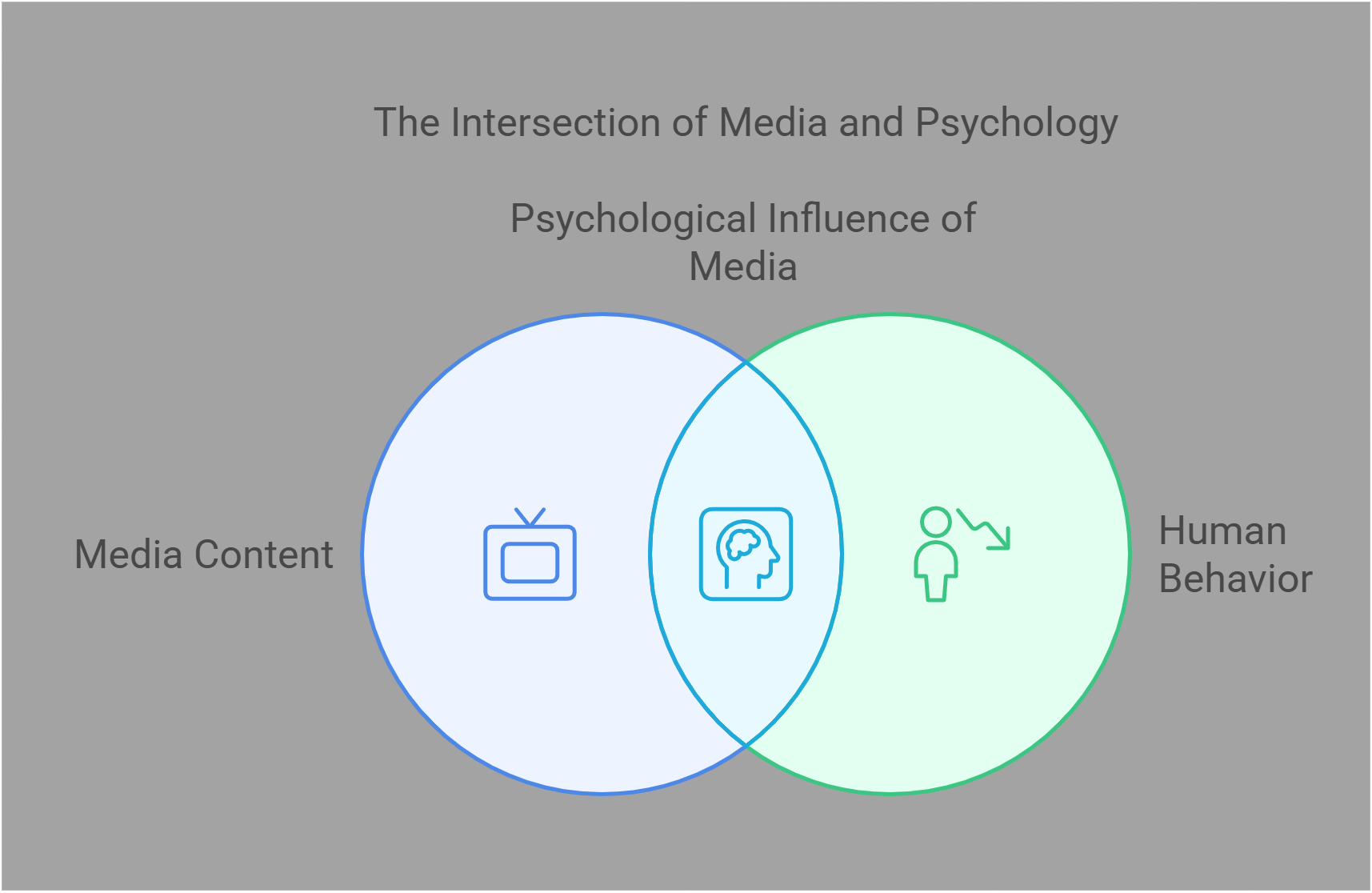
📋 Overview
This guide explores the following essential concepts in media psychology:
- Media Priming
- Parasocial Relationships
- Effects of Violent Media
- Media Consumption Habits
- Emotional Appeals in Advertising
- Role of Media in Identity Formation
- Social Comparison Theory in Media
- Impact of Streaming Platforms
- Media Addiction Patterns
- Digital Media’s Effect on Attention Spans
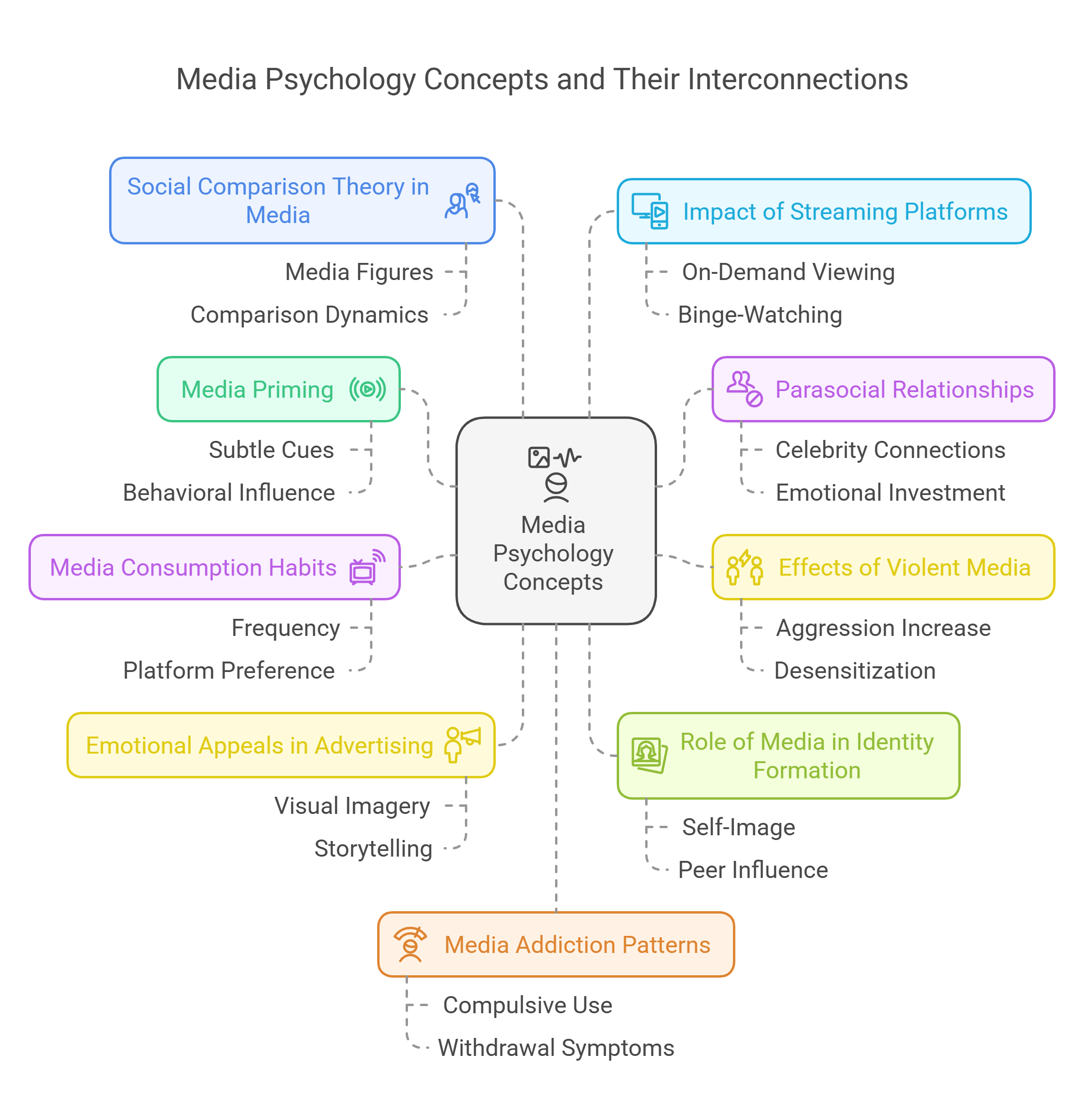
🔍 Detailed Explanations
1. Media Priming
Detailed Explanation: Media priming refers to how exposure to certain media content influences subsequent thoughts and behaviors. It suggests that media cues activate related concepts in memory, shaping perception and decision-making.
- Applications:
- Political campaigns use priming to emphasize specific issues, making them top-of-mind for voters.
- News framing influences public attitudes on societal topics.
Example: Watching news about economic downturns might prime viewers to interpret personal financial struggles as systemic issues.
Explained Simply: Media priming is like planting a seed in the mind—what you watch shapes how you think and act afterward.
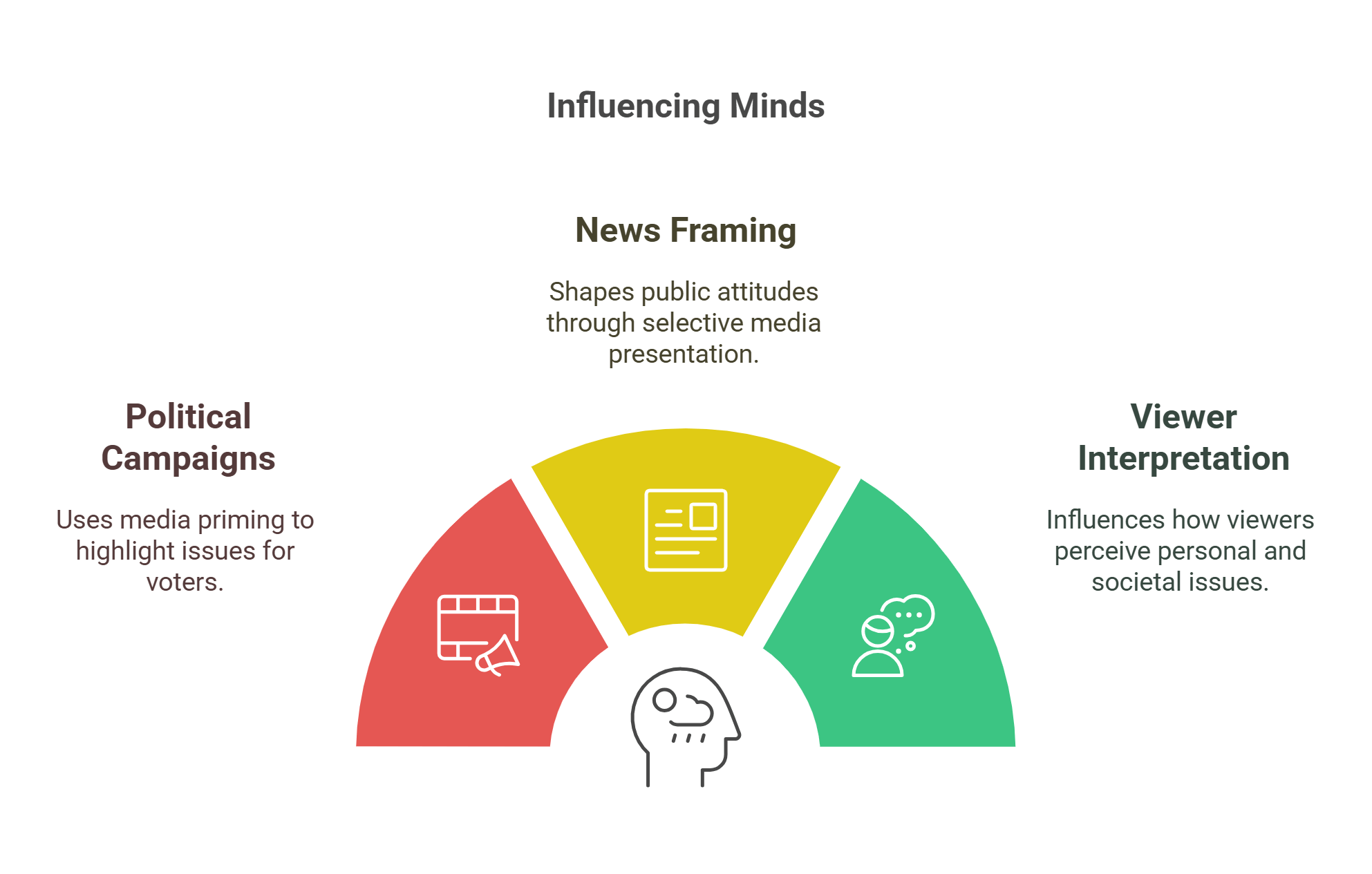
2. Parasocial Relationships
Detailed Explanation: Parasocial relationships are one-sided emotional connections that individuals form with media figures, such as celebrities, influencers, or fictional characters.
- Key Features:
- Provide a sense of companionship or attachment.
- Often mimic real-life social bonds.
- Applications:
- Used in advertising by leveraging trusted public figures to build brand loyalty.
Example: A fan feeling a strong connection to a YouTuber who shares personal stories regularly.
Explained Simply: Parasocial relationships are like friendships where only one person is involved, but the emotions feel real.
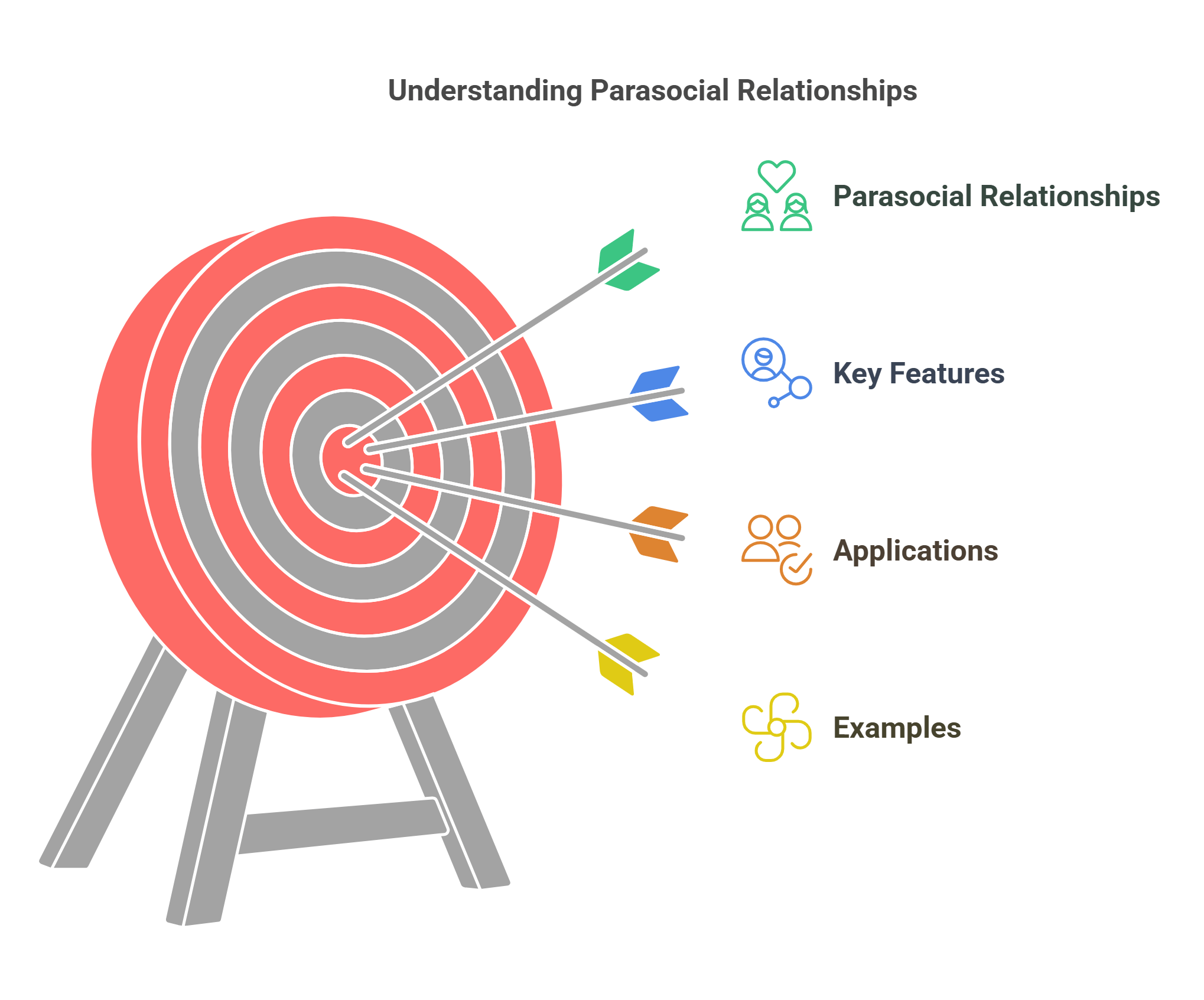
3. Effects of Violent Media
Detailed Explanation: Exposure to violent media, such as video games or movies, raises concerns about its influence on aggression and desensitization to violence.
- Theories:
- Social Learning Theory: Observing violence can encourage imitation.
- Desensitization Hypothesis: Frequent exposure reduces emotional sensitivity to violence.
- Debate:
- Critics argue that violent media doesn’t directly cause aggression but may influence individuals already predisposed to violence.
Example: Playing violent video games has been linked to short-term aggressive thoughts but mixed evidence for long-term behavioral impacts.
Explained Simply: Violent media is like turning down the volume on empathy for violence—it can reduce emotional reactions in some people.
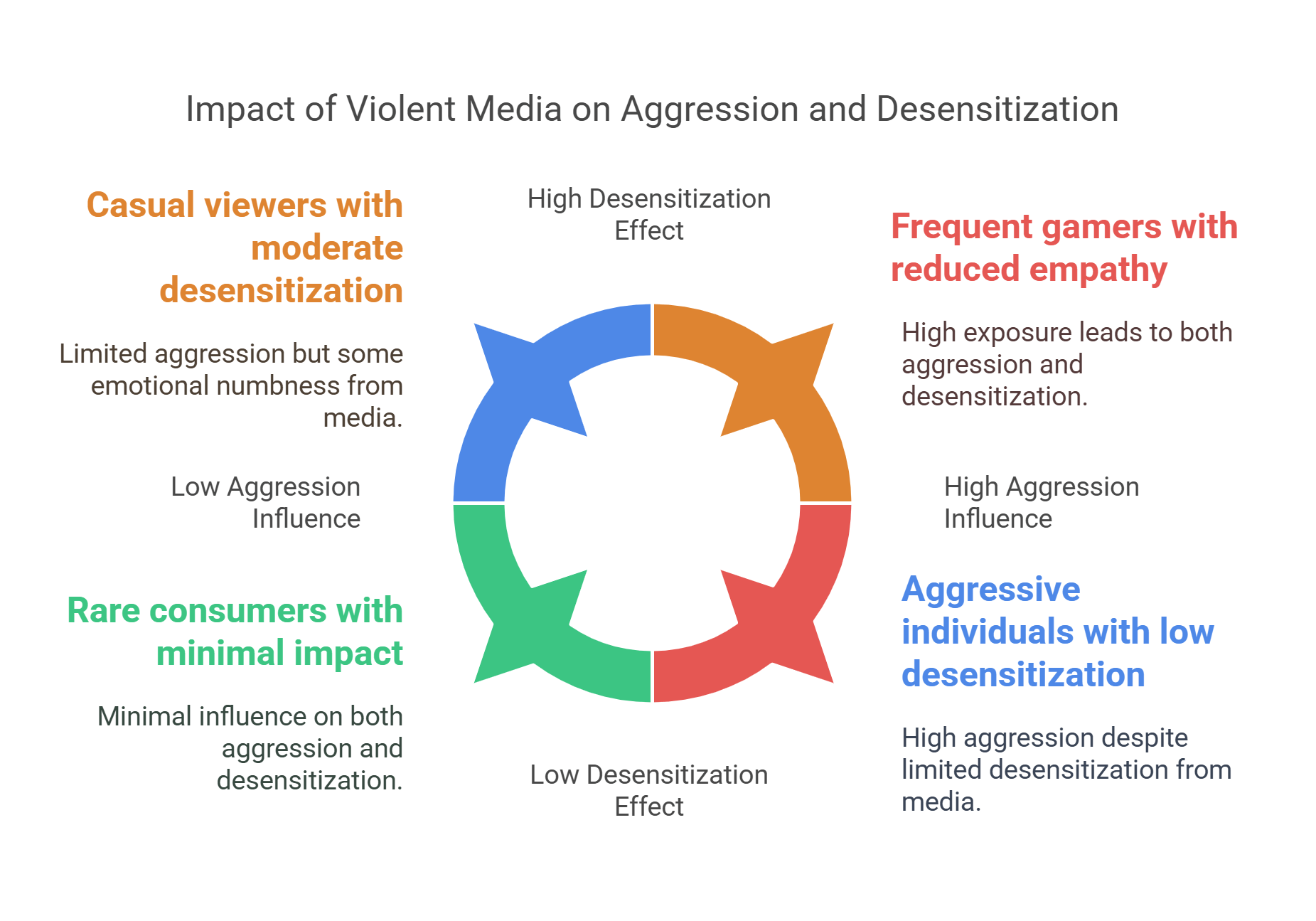
4. Media Consumption Habits
Detailed Explanation: Media consumption habits refer to patterns in how individuals use media, including frequency, duration, and content preferences.
- Key Trends:
- Increased screen time with the rise of digital platforms.
- Multitasking with multiple screens (e.g., watching TV while using a phone).
- Impacts:
- Overconsumption may lead to reduced productivity or social interactions.
Example: Binge-watching entire seasons of shows is a common media habit driven by streaming platforms.
Explained Simply: Media consumption habits are like diets—what and how much you consume affects your mental and emotional health.
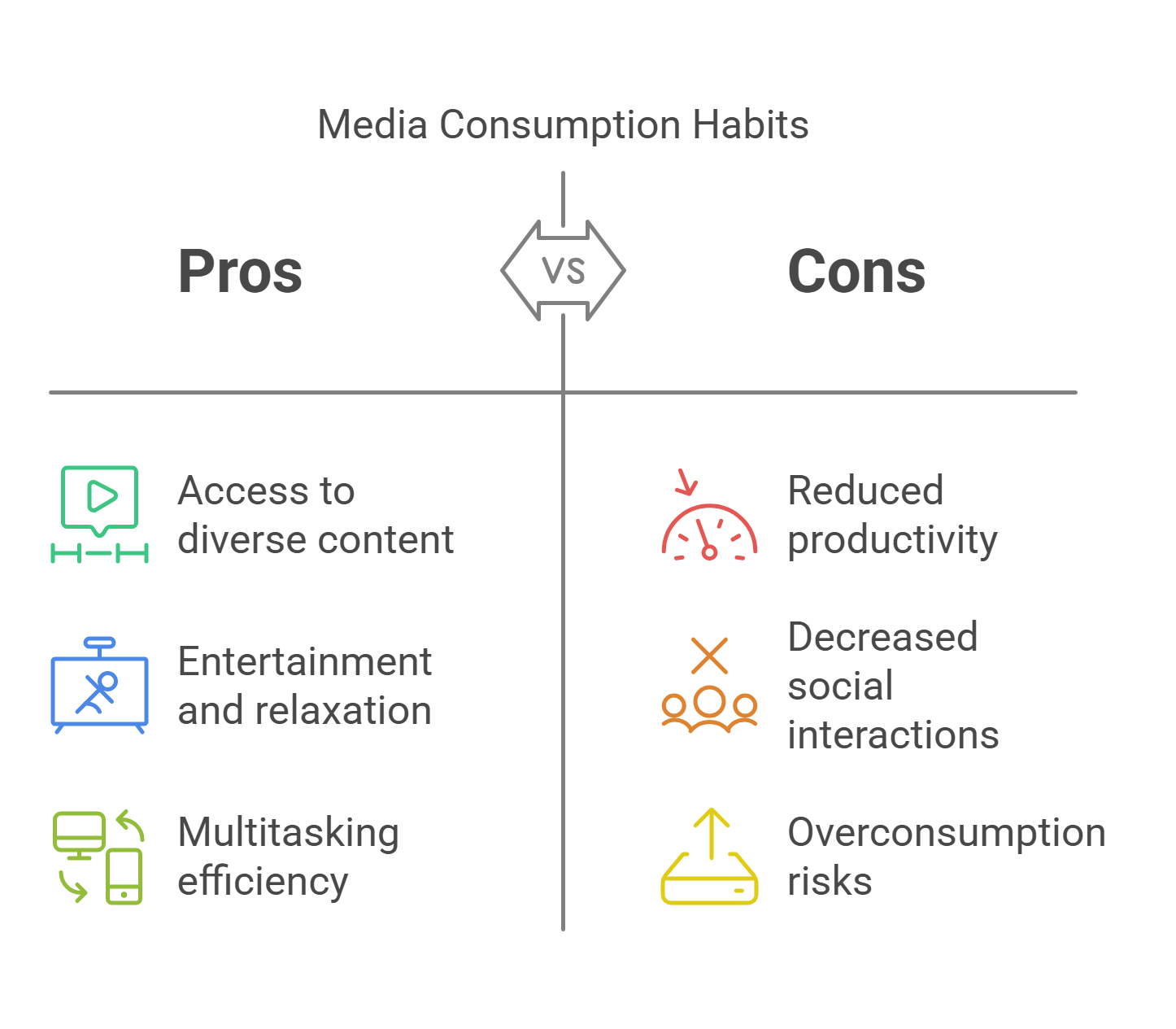
5. Emotional Appeals in Advertising
Detailed Explanation: Emotional appeals in advertising use messages that evoke feelings to influence consumer behavior, such as happiness, nostalgia, or fear.
- Common Strategies:
- Fear Appeals: Highlight risks to encourage action (e.g., anti-smoking ads).
- Humor Appeals: Use comedy to increase memorability.
- Nostalgia Appeals: Create emotional connections by evoking the past.
Example: An ad for a family car showing happy moments during a road trip uses emotional appeal to connect with viewers.
Explained Simply: Emotional appeals in advertising are like using feelings as a shortcut to win hearts and influence decisions.
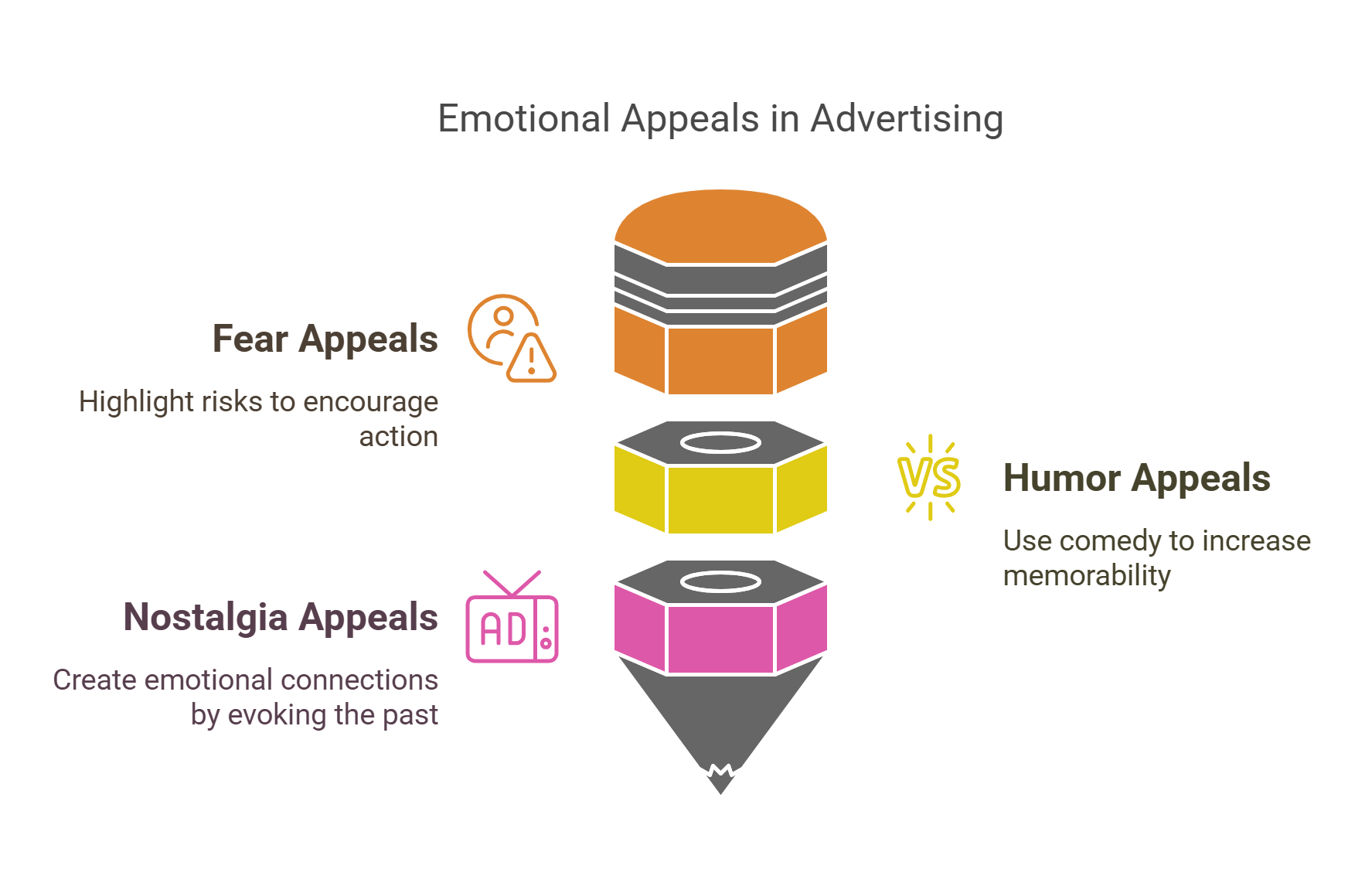
6. Role of Media in Identity Formation
Detailed Explanation: Media plays a crucial role in shaping personal and social identities by providing representations of gender, culture, and lifestyles.
- Key Insights:
- Exposure to diverse media helps individuals explore and adopt different aspects of identity.
- Stereotypes in media can reinforce societal norms or challenge them.
Example: Social media allows users to curate their identities through posts, photos, and interactions.
Explained Simply: Media is like a mirror and a map, reflecting who we are and guiding who we can become.
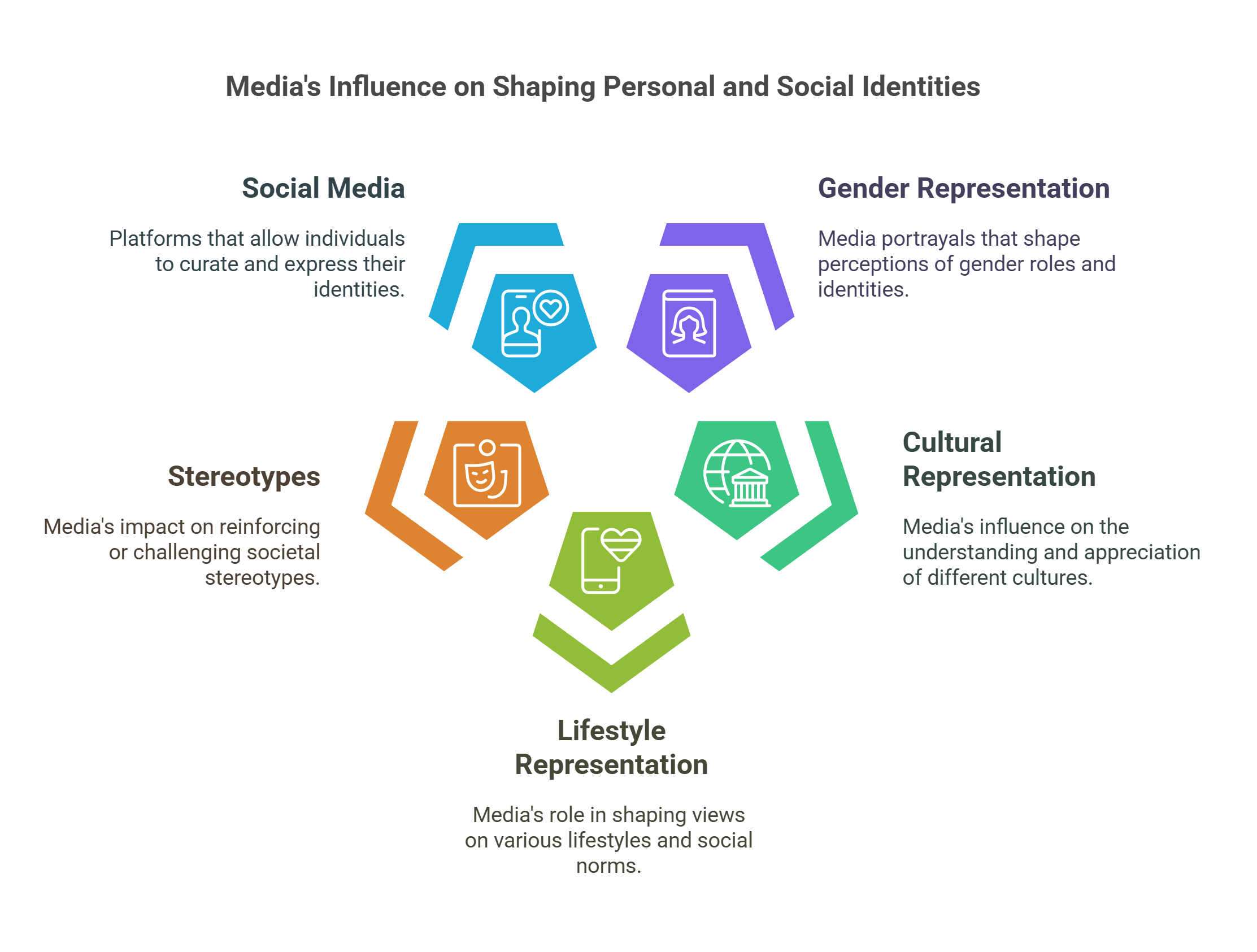
7. Social Comparison Theory in Media
Detailed Explanation: Social comparison theory suggests that individuals evaluate themselves by comparing their lives to others, often influenced by media portrayals.
- Key Effects:
- Upward Comparison: Comparing to perceived superior individuals, leading to inspiration or envy.
- Downward Comparison: Comparing to less fortunate individuals, boosting self-esteem.
- Applications:
- Heavily used in social media platforms where curated content fosters comparisons.
Example: Feeling inadequate after seeing influencers’ idealized lifestyles on Instagram.
Explained Simply: Social comparison in media is like looking at a funhouse mirror—distorted images can change how we see ourselves.
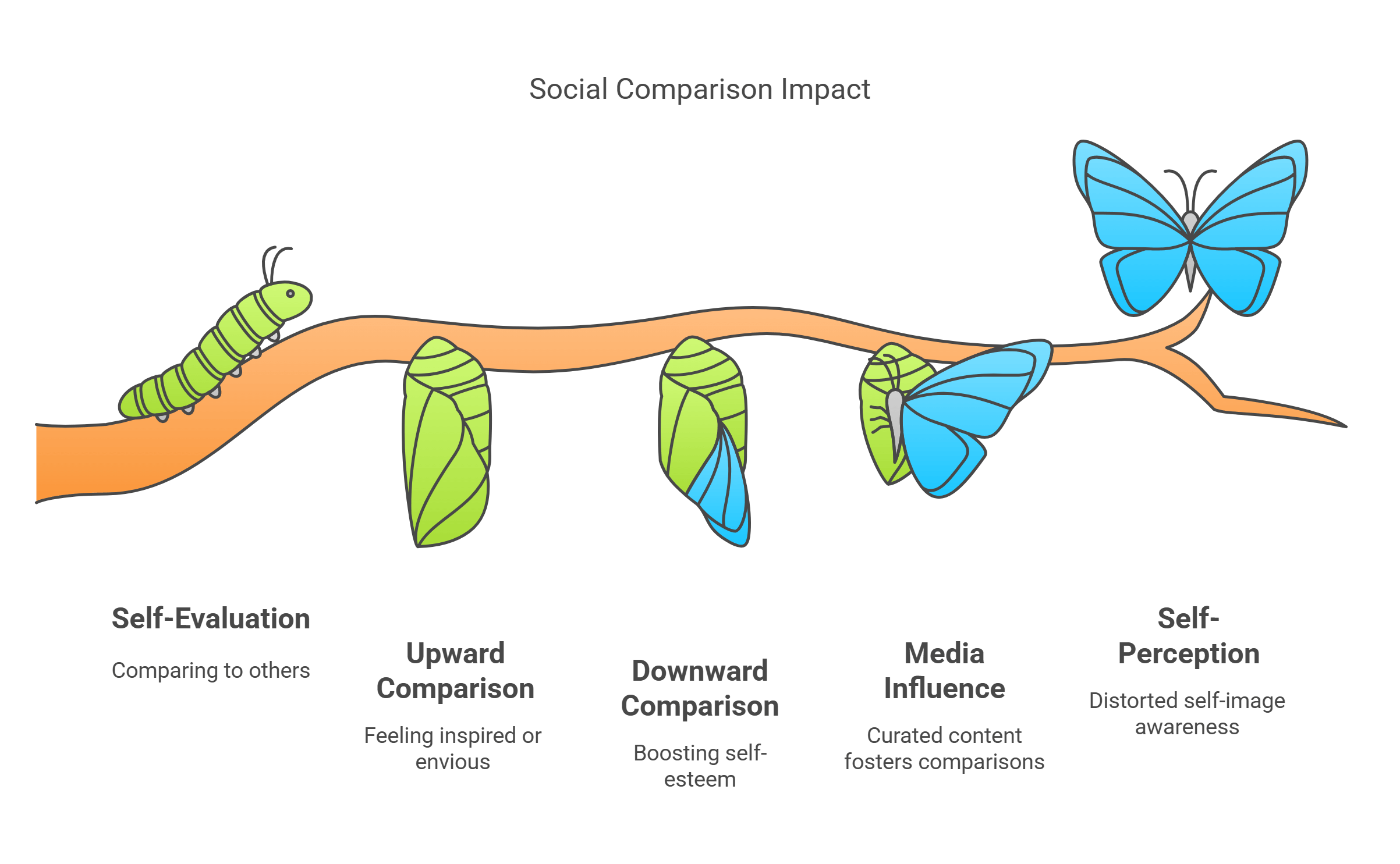
8. Impact of Streaming Platforms
Detailed Explanation: Streaming platforms like Netflix, Hulu, and Disney+ have revolutionized media consumption by offering on-demand access to vast content libraries.
- Key Features:
- Personalization algorithms tailor recommendations.
- Binge-watching culture reshapes viewing habits.
- Implications:
- Promotes media fragmentation, where viewers choose niche content over shared cultural experiences.
Example: Netflix recommending shows based on viewing history illustrates streaming platforms’ personalization capabilities.
Explained Simply: Streaming platforms are like custom media buffets—viewers can pick exactly what they want, whenever they want.

9. Media Addiction Patterns
Detailed Explanation: Media addiction involves excessive use of media platforms, leading to negative consequences like reduced sleep, productivity, or real-life social interactions.
- Key Features:
- Compulsive use despite harmful effects.
- Withdrawal symptoms when access is limited.
- Causes:
- Dopamine-driven rewards from likes, shares, and notifications.
Example: Scrolling through social media late at night despite needing sleep.
Explained Simply: Media addiction is like being glued to a screen—hard to break free, even when it hurts.
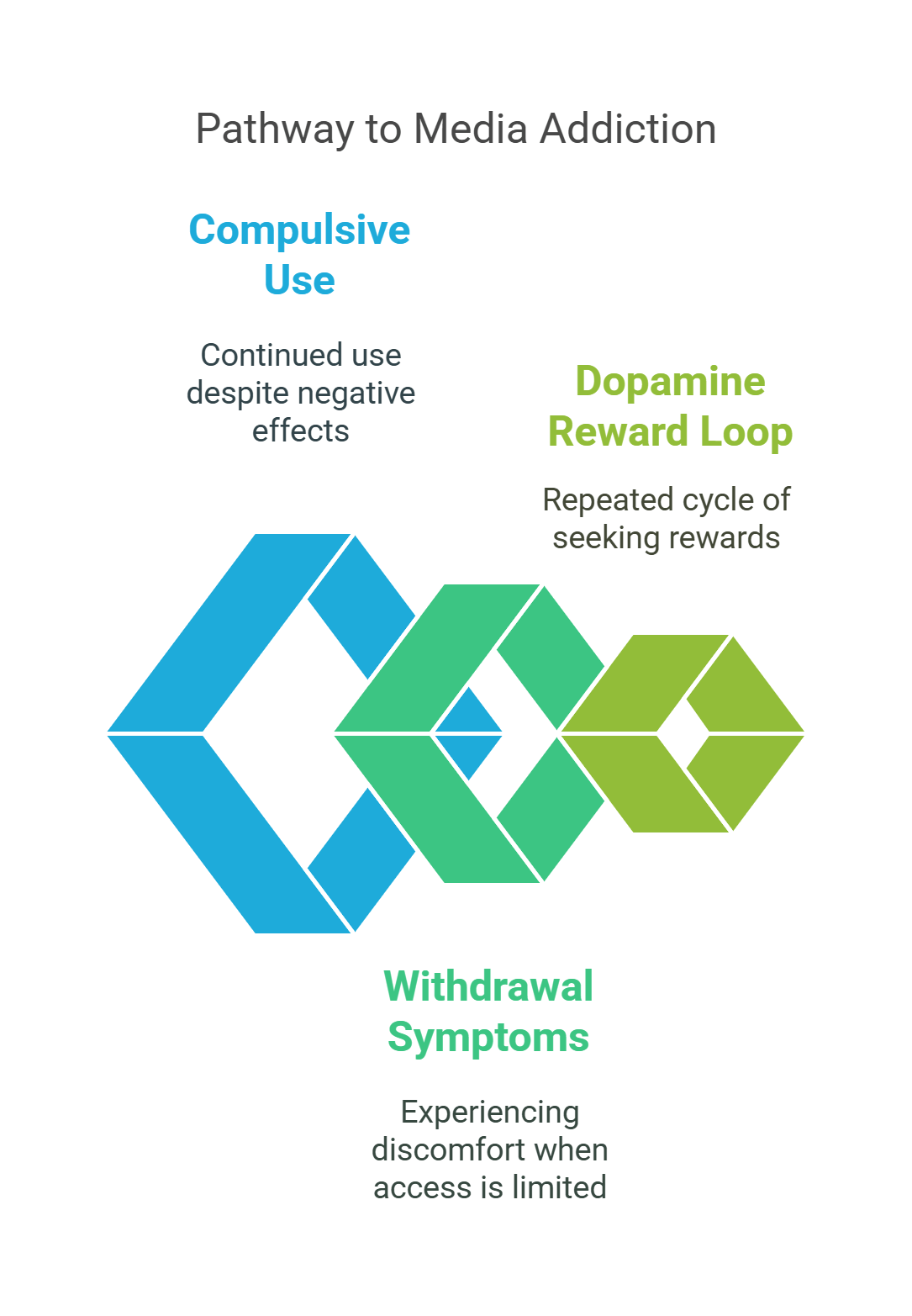
10. Digital Media’s Effect on Attention Spans
Detailed Explanation: Digital media consumption, especially through short-form content, is linked to declining attention spans and multitasking habits.
- Key Concerns:
- Frequent interruptions reduce the ability to focus deeply.
- Short, engaging content (e.g., TikTok videos) reinforces quick gratification cycles.
- Implications:
- Challenges in education and workplaces requiring sustained focus.
Example: Struggling to read a long article after spending hours on quick-scroll social media platforms.
Explained Simply: Digital media’s effect on attention spans is like turning a book into sound bites—entertaining but harder to absorb deeply.

✨ Conclusion
Media psychology delves into the profound influence of media on human behavior and society, from shaping identities to altering attention spans. By understanding concepts like media priming, social comparison, and media addiction, readers can critically analyze RC passages and navigate the complexities of the digital age. This field reveals the psychological dimensions of our media-saturated lives and offers insights into how we engage with the world through screens.










